It can be easy to take sound video recording for granted because we all have a smartphone that offers this capability, but up until the late 1920s, silent films were not only popular, but were necessary. These early films are historical artifacts and classics that deserve a revisit due to their revolutionary filmmaking techniques and influence.
Capture loves preserving memories for over 12 million families, but we also love to preserve the history of film, cameras, and motion picture technology. That’s why we put together this list of the top 15 films and what makes them so great!
Keep reading to learn about the birth of silent film, 15 of the most important silent films like “The Great Train Robbery,” “The Birth of a Nation,” and “The Gold Rush,” as well as key figures during the silent film era and how silent films impacted the American film industry.
Jump to:
- The Birth of Silent Film
- Noteworthy Silent Films
- Key Figures in Silent Film Era
- The Impact of Silent Films
- The Transition from Silent to Sound
The Birth of Silent Film
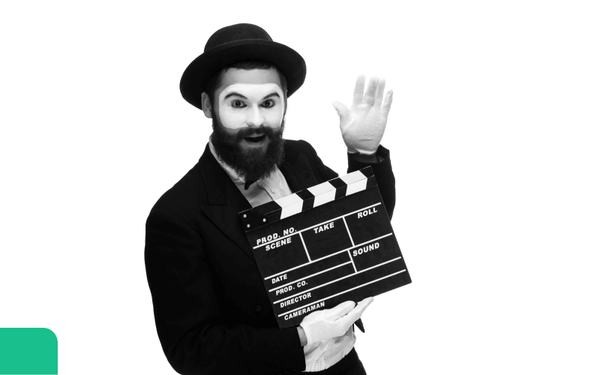
Silent films are simply films that have no synchronized recorded sound and began when the first video was recorded. Silent films relied on acting and events to visually convey stories and emotions, but some also used title cards to display key lines of dialogue. Additionally, they were most often accompanied by live pianists or even a small orchestra.
The first true silent film is often considered the “Roundhay Garden Scene.” Despite being only 2 seconds long, it started the film industry that would later evolve into “talkies,” blockbusters, and the movies that we know and love today.
The work of Eadweard Muybridge laid the foundation for American inventor George Eastman to develop a stable type of celluloid film in 1888, similar to Super 8 film or photographic film rolls that are still used today. If you’re wondering, “When was the video camera invented?” then this can be considered the very beginning.
Then, the Lumiere Brothers held the first public projection of a silent movie in 1895 in Paris, France. They used a type of projection that works similar to how a projector works today to display the movie and this event is often considered to be the birth of the movie theater. Later, the film equipment company Pathe of New York acquired the Lumiere Brother patents.
While Thomas Edison introduced the phonograph in 1877 and the first film with recorded sound, “The Dickson Experimental Sound Film,” was released in 1894 the silent film era lasted all the way until 1929, with a few silent motion pictures being released later than that.
This early era of motion pictures introduced various techniques still used by filmmakers like three-point lighting, panning, continuity editing, and more. Because of this, there are some historically significant and important films from the era including the 15 noteworthy silent films below!
Noteworthy Silent Films
These are some of the most important silent films for the evolution of the camera, filmmaking industry, and motion pictures. Some are groundbreaking dramas while others are comedies, short films, controversial films, or portrayals of the events of the time period.
Roundhay Garden Scene (1888)
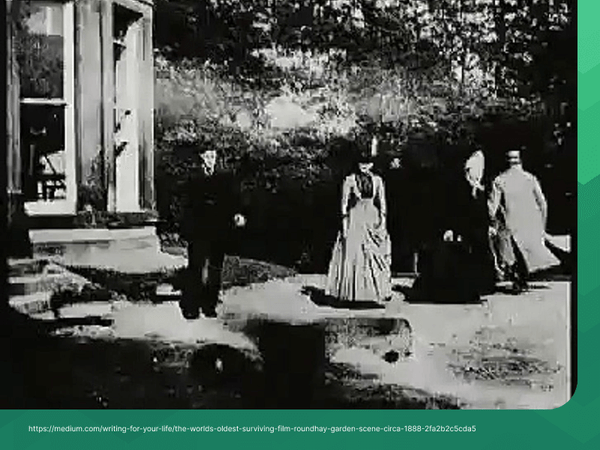
This is typically recognized as the first silent film ever recorded. It was captured on an old fashioned camera by French inventor Louis Le Prince in northern England in 1888. It’s only 1.66 seconds long and depicts several people in a garden. While that might not be special, it marked the beginning of film history.
The Great Train Robbery (1903)
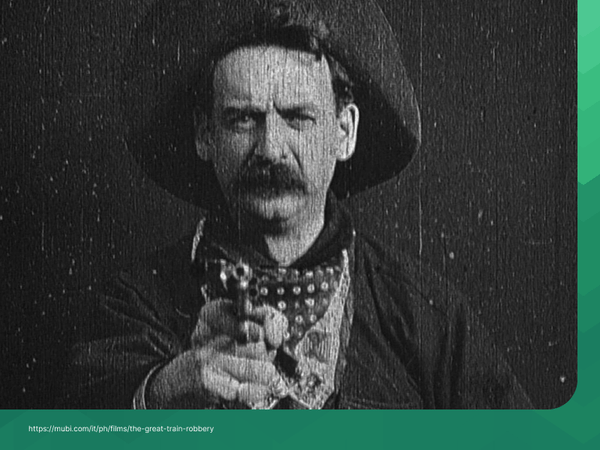
“The Great Train Robbery” by Edwin S. Porter of the Edison Manufacturing Company is considered one of the great masterpieces of early silent cinema due to the practical special effects, ambitious stunts, cohesive storyline, and techniques like matte effects, wide shots, and camera pans. It also marked the beginning of Western film themes and plots.
A Trip to the Moon (1902)

This movie is a science-fiction adventure film that depicted satirical critiques of French imperialists. It also started the French “faerie” tradition and is usually considered the first silent film of the science-fiction film genre. The most iconic scene is the image of the space capsule landing on the Moon’s eye.
The Birth of a Nation (1915)
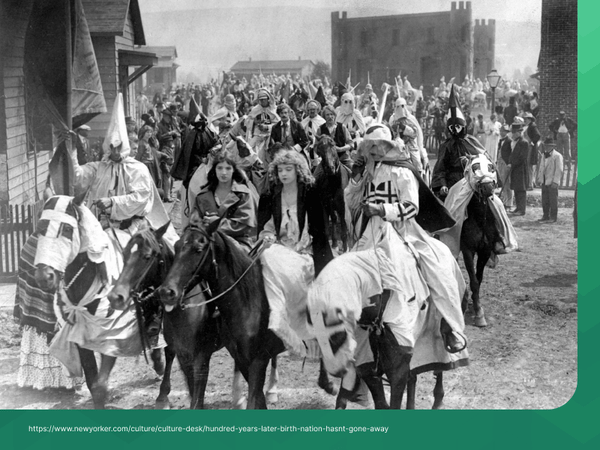
“The Birth of a Nation” by D.W. Griffith and starring Lillian Gish, Henry B. Walthall, and John Ford, is controversial due to the depiction of post-Civil War society including the KKK, Lincoln’s assassination, and racist depictions of African Americans. Because of this, it’s historically important and influences the Civil Rights Movement and conversations about race in American society.
Intolerance (1916)
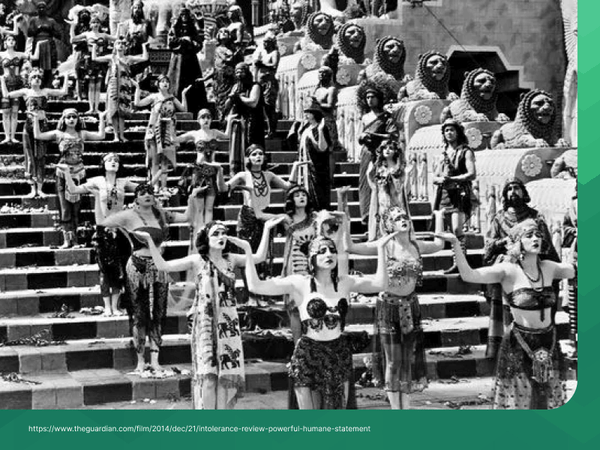
Another motion picture by D. W. Griffith, one of the pioneers of silent film, “Intolerance” was released in response to “The Birth of a Nation.” It consists of four different stories from different time periods, each with a distinct move and color, making it an ambitious departure from typical chronological and straightforward narrative film techniques.
The Cabinet of Dr. Caligari (1920)
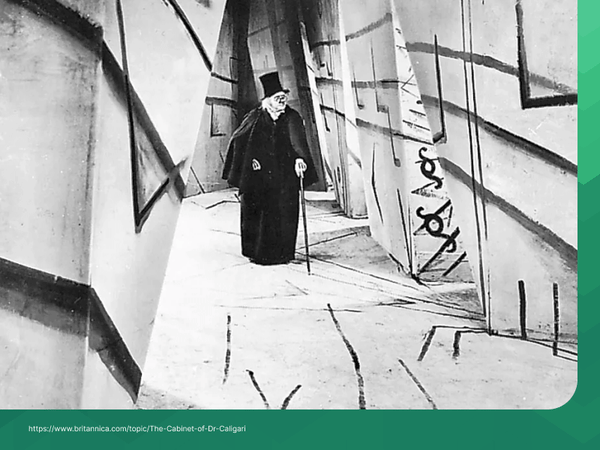
Long before horror movies of the 1980s, 90s, and 2000s came “The Cabinet of Dr. Caligari.” It’s also considered a definitive expressionist film in Germany and uses a dark visual style with landscapes, shadows, streaks, structures, and other special effects.
Nosferatu (1922)
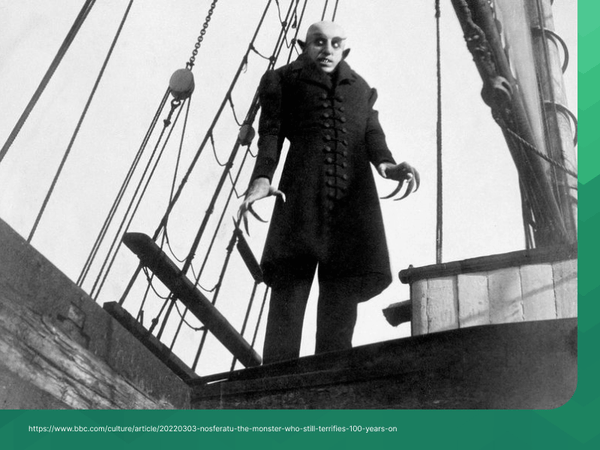
Though there have been many depictions of Bram Stoker’s Dracula, “Nosferatu” is the first. While the feature-length film was technically a silent film, it had an original score composed by Hand Erdmann that was performed at the premiere.
Battleship Potemkin (1925)
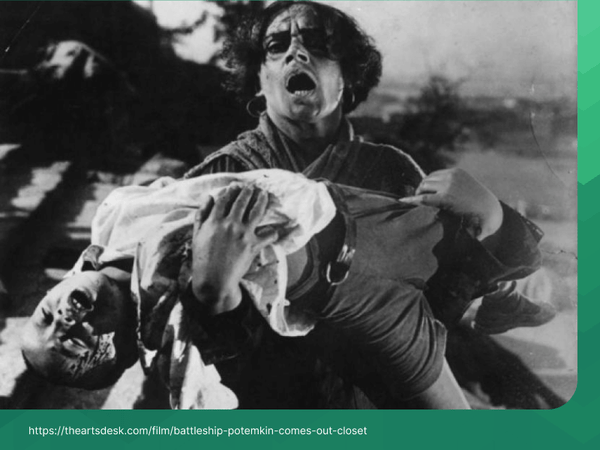
This Soviet feature film by silent film director Sergei Eisenstein is often considered one of the greatest films of all time. The montage techniques used in the film have been adapted for various films including “Dune” from 2021, “Star Wars: Episode III – Revenge of the Sith,” and much more.
The Gold Rush (1925)
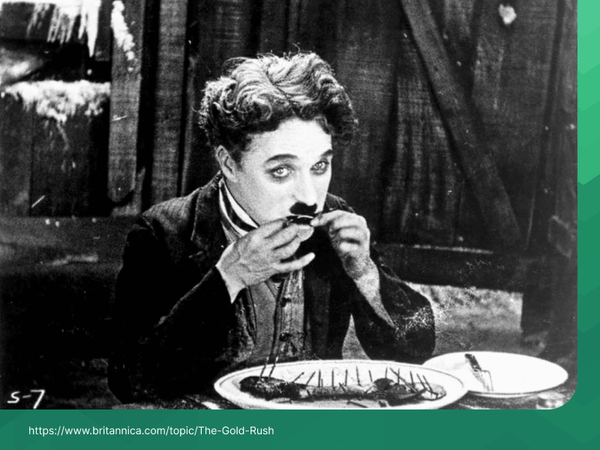
This comedy film by Charlie Chaplin depicted the gold rush in America. Chaplin drew inspiration from some of the oldest photographs and stories and came up with one of the most popular films of the silent era. It also made use of English intertitles and dialogue cards intermingled with Chaplin’s comedic acting and slapstick humor.
Metropolis (1927)
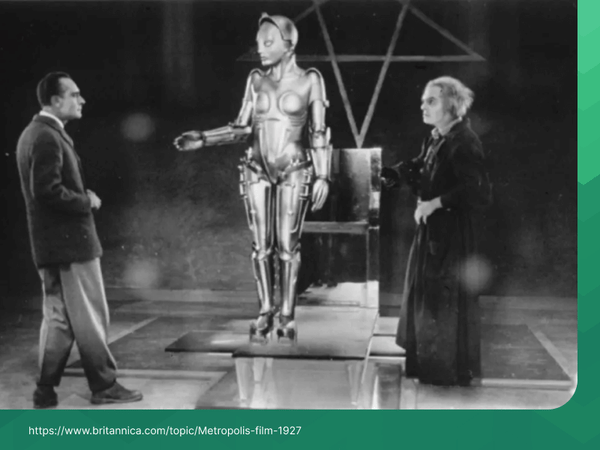
“Metropolis” is a groundbreaking dystopian silent film by Fritz Lang and while the original film was substantially cut, there have been several video restoration attempts. Still, it’s considered one of the most influential films of the silent era for its combination of political themes, live soundtrack, and epic storytelling.
The General (1926)
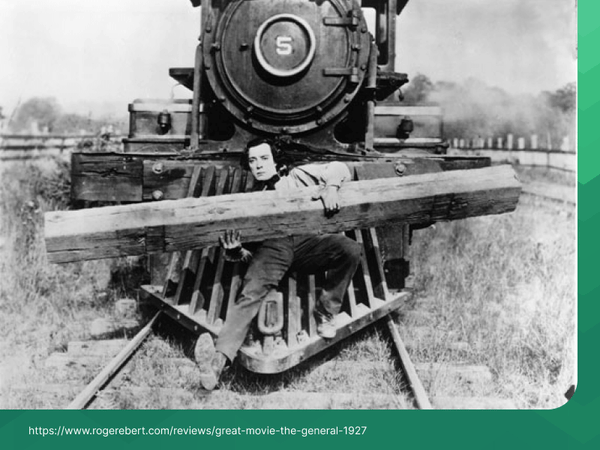
While not a hit at the time, this Buster Keaton film that was released toward the back end of silent films and early cinema history is now considered to be one of the greatest comedies of the 1920s. During the movie, Keaton performed dangerous stunts that not only amplified the comedy but created suspense and action.
Sunrise: A Song of Two Humans (1927)

This is a romantic drama by German director F.W. Murnau and winner of multiple Academy Awards at the first ever event in 1929. It was accompanied by the first ever talking newsreels and acted as a transition to sound “talkies” of the next Hollywood, California film era.
The Passion of Joan of Arc (1928)
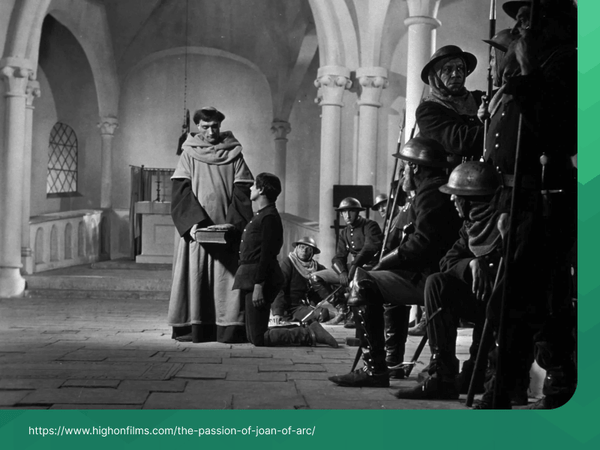
Considered a landmark of cinema, this film depicted Joan of Arc’s trial and execution. It was filmed on a huge concrete set and is known for its use of close-ups, exceptional acting, and groundbreaking production techniques.
The Wind (1928)
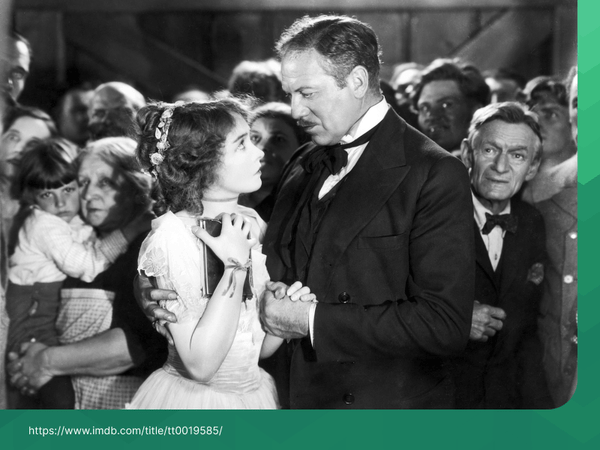
This silent black and white movie is one of the last silent moving pictures released by the Metro-Goldwyn-Mayer film company. Considered one of the best films by Victor Sjöström and one of the greatest performances by Lillian Gish. Released at the end of the silent film era, this movie was a culmination of many of the techniques introduced in earlier movies.
City Lights (1931)
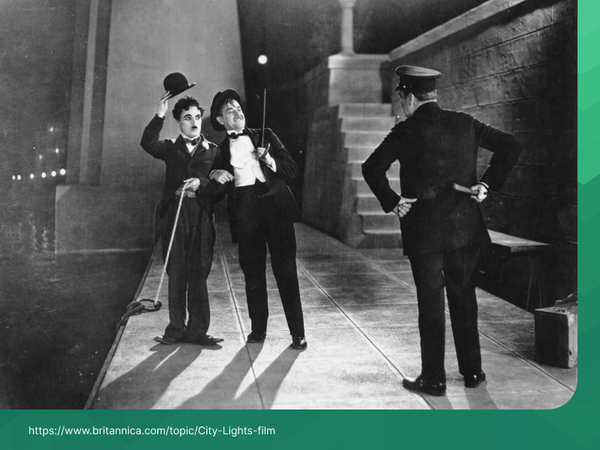
In this movie, Charlie Chaplin plays The Tramp from his earlier films who falls in love with a blind girl and develops a relationship with a millionaire who also happens to be a heavy drinker. Despite being produced in the sound era, it was a successful silent film praised by famous directors like Stanley Kubrick and Woody Allen.
Key Figures in Silent Film Era

Some of the most important figures of the silent film era include directors, innovators, and actors that propelled old video camera techniques, filmmaking methods, and artistic choices.
For example, Georges Méliès, director of movies like “A Trip to the Moon” and “The Impossible Voyage,” helped improve special effects using substitution splices, multiple exposures, and hand-painted film color. He is also the first known user of storyboards that are still popular in filmmaking over 100 years later.
Other iconic silent film directors include Ruth Ann Baldwin, D.W. Griffith, Lois Weber, and Frank Borzage. All of these directors helped to make Hollywood what it is today in one way or another from production to writing, special effects to acting, and more.
When it comes to comedy acting during the silent era, there are no greater figures than Buster Keaton, Harold Lloyd, and Charlie Chaplin. All three could display a wide range of emotions while maintaining humor without ever needing to vocalize. This included exaggerated movements, slapstick scenes, and more.
Plus, Charlie Chaplin wrote, directed, produced, edited, and composed the music for most of his movies. Buster Keaton was known for outrageous stunts that combined suspense with comedy while Harold Lloyd helped to inspire Charlie Chaplin’s later works.
Lillian Gish is often called the “First Lady of American Cinema” and influenced talkie actresses like Bette Davis. She also won an Honorary Oscar in 1971 and appeared in some of the most groundbreaking silent movies like “The Wind” and “The Birth of a Nation.”
The Impact of Silent Films
Silent films were the beginning of the movie industry that we still know and love today. They evolved visual storytelling techniques without sound, demonstrated unprecedented acting techniques, and developed special effects.
This all started with the first silent film in the history of Earth and leads all the way to talkies of the late 1920s and 1930s. Additionally, this silent era of film also helped to create many of the movie genres that still exist to this day like science fiction, western, romance, and comedy.
However, in the grand scheme of things that era was brief and sound films mostly eradicated silent films. That being said, some filmmakers still create silent films. Even the filmmakers who solely use audio and visual storytelling evolved their art from these original silent film innovations.
The Transition from Silent to Sound
“The Jazz Singer” from 1927 was not the first-ever motion picture with sound, but it was the first feature-length movie with synchronized dialogue and marked the end of the silent film era. While silent movies would still be made for the next few years, it wasn’t long before every movie was a “talkie” and had speaking dialogue and sound effects.
This meant a new group of directors, actors, and actresses who helped build the next phase of motion picture technology and techniques. Still, the first silent film and all the movies of the era are still around and considered classics. You can still view them on VHS or other analog formats as long as you know how to watch old video camera tapes. Their legacy lasts and they are certainly worth a watch for their humor, storytelling, and cultural impact.
Conclusion
From the first silent film, “The Roundhay Garden Scene,” to iconic silent motion pictures like “The Great Train Robbery,” “Metropolis,” “The Birth of a Nation,” and others, the silent film era is still cherished by filmmakers around the world from London to Tokyo. It’s important to ensure they last forever as digital artifacts stored in archives and museums so that their historical significance is never forgotten.
Just like those movies, your memories and legacy also deserve to be passed down to future generations. If you want to learn how you can preserve your home movies, photos, and film reels, click here to learn about Capture digitization services!










